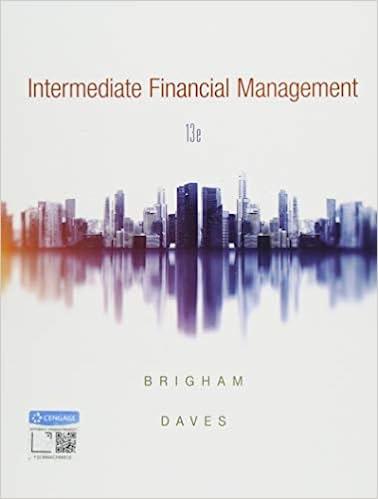Question
1. You are working as a financial analyst in the mortgage lending group at CIBC. After finishing his three- martini lunch, your supervisor lurches
1. You are working as a financial analyst in the mortgage lending group at CIBC. After finishing his three- martini lunch, your supervisor lurches over to your desk and tells you that a CIBC client is interested in a fully insured fixed-rate mortgage loan with a 5.00% annual mortgage rate, an initial balance of $800,000.00, and full amortization over a 25 year maturity. The client is, however, unsure of whether he prefers the amortization to be of the "interest only" form or the "constant monthly payment" form, and he wants to compare the coupon payments corresponding to each alternative form. Your supervisor, however, expresses to you his concern about both the market value of these alternative forms of the mortgage and also about the interest rate risk each such form poses to the bank. The current term structure of monthly market interest rates, described below as Scenario 0 in Appendix I, is given for simplicity by simple compounding of the gross market interest rate, where the net form of this interest rate coincides exactly to the monthly coupon rate on the mortgage. Given this current term structure of market interest rates, your supervisor is particularly interested in the implied gains or losses to the bank, for each form of this mortgage, if the current term structure suddenly changes to each of two alternative hypothetical forms. He calls the first of these alternative forms Scenario 1 and the second Scenario 2, both of which appear in Appendix I below." He assigns you the following tasks: a. Using the current term structure of interest rates, calculate the current market value of the entire mortgage and also the respective current market values of coupon payments in months 30, 90 and 244, for the client's desired interest only mortgage. b. Now do exactly the same as in (a) above for the constant payment mortgage. c. Using the first alternative term structure of market interest rates, Scenario 1, calculate the current market value of the interest only version of the client's desired mortgage and, for this same version, the current market values of coupon payments in months 30, 90 and 244. d. Now do exactly the same as in (c) above for the constant payment mortgage. e. Using the second alternative term structure of market interest rates, Scenario 2, calculate the current market value of the entire mortgage as well as the current market value of the coupon payments in months 30, 90, and 244 of the interest only version of the client's desired mortgage. f. Now do exactly the same as in (e) above for the constant payment version. g. In order to illustrate the interest rate risk posed to the bank if the current term structure of interest rates suddenly switched to the term structure described by Scenario 1, your supervisor asks you to calculate the gains or losses on the current market value of the mortgage that would accrue to CIBC from such a switch for the interest only version of the client's desired mortgage, measured on the basis of these values for the current term structure (Scenario 0). h. Now your supervisor asks you to calculate the same gains or losses for the constant payment version of the client's desired mortgage under a switch from the current term structure to that in Scenario 2. i. In order to illustrate the interest rate risk posed to the bank if the current term structure of interest rates suddenly switched to the term structure described by Scenario 2, your supervisor asks you to calculate the gains or losses on the current market value of the mortgage that would accrue to CIBC from such a switch for the interest only version of the client's desired mortgage. j. Now your supervisor asks you to calculate the same gains or losses for the constant payment version of the client's desired mortgage. k. Which version of the mortgage gives the largest gains or losses to CIBC under the switch from the current term structure to that in Scenario I? 1. Which version of the mortgage gives the largest gains or losses to CIBC under the switch from the current term structure to that in Scenario 2? m. If your answer to questions (k) and (1) differ, explain why.
Step by Step Solution
There are 3 Steps involved in it
Step: 1

Get Instant Access to Expert-Tailored Solutions
See step-by-step solutions with expert insights and AI powered tools for academic success
Step: 2

Step: 3

Ace Your Homework with AI
Get the answers you need in no time with our AI-driven, step-by-step assistance
Get Started



